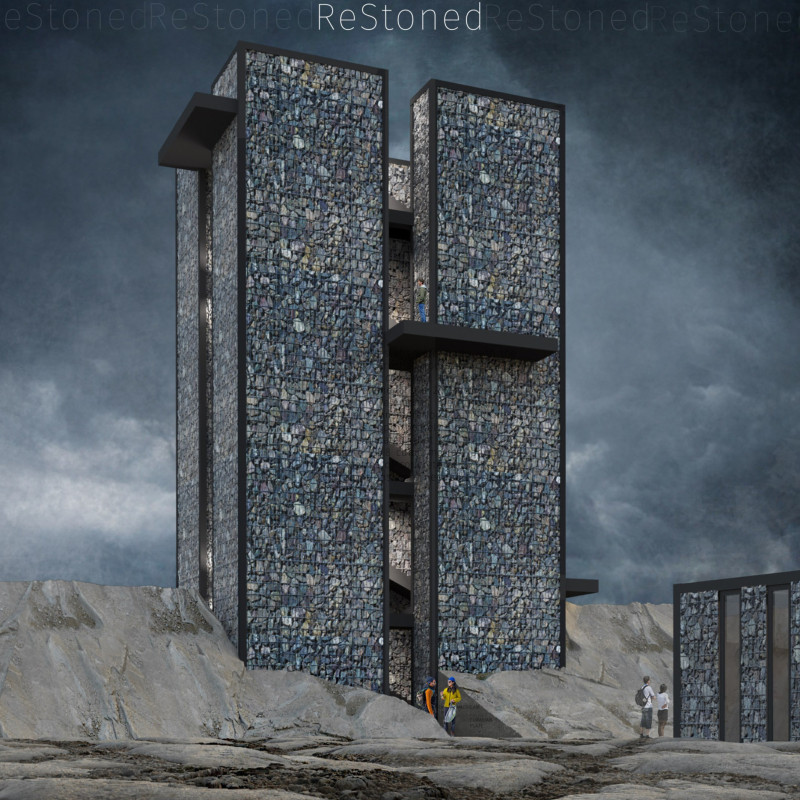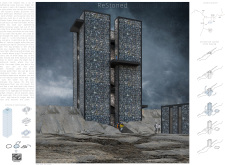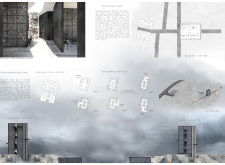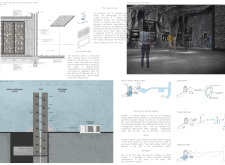5 key facts about this project
The design reflects an understanding of the region's unique geological context. This dual structure—the ReStoned Tower and the Information Center—works cohesively to provide functional and informative experiences for visitors. The tower, which rises to 14 levels with six underground floors and eight above ground, is modular in its design. This configuration not only accommodates varying visitor interactions but also enhances the tower's relationship with the topography. Different levels offer curated views that allow visitors to appreciate the vastness of the landscape while fostering a sense of exploration and connection to the earth’s natural forces.
Central to the project’s design philosophy is the use of local materials, specifically volcanic rock sourced directly from the surrounding area. This material choice is significant, as it creates a visual and tactile relationship between the architecture and its environment, grounding the structure in its geographical context. The tower's outer facade, comprised of these volcanic stones, symbolizes not just the geological history but also the aesthetics of the region, reinforcing a dialogue between nature and built form. In addition, concrete is strategically used throughout, particularly in pathways that interconnect the various elements of the site. These paths are designed with crushed rock to ensure they resonate with the natural landscape.
The Information Center complements the ReStoned Tower by offering essential visitor services. Designed to be inviting and engaging, it includes an exhibition hall, offices, and interactive areas that encourage educational activities about the geological marvels of the region. The use of glass in this facility enhances transparency and allows natural light to flood the interior spaces, fostering a welcoming atmosphere that encourages interaction among guests.
Sustainability is a key tenet of the design, aligning with Iceland’s emphasis on renewable energy and environmental stewardship. The facility incorporates geothermal heating systems, drawn from the geothermal resources prevalent in the region. Coupled with sustainable water usage strategies that utilize cold springs, the project sets an example of how architecture can operate harmoniously within its environment.
What distinguishes the ReStoned project from others is its intentional focus on the interplay between architecture and geology, emphasizing education through design. By offering pathways that lead visitors either into the tower or towards natural attractions such as caves and geological formations, the design invites exploration and fosters a deeper understanding of volcanic activity and tectonic movements.
The architectural project engages with visitors on multiple levels, making it both a site of learning and a space for reflection on the powerful forces at work in the natural world. The unique approach to integrating local materials, sustainability, and visitor experience creates a cohesive architectural narrative that resonates with the essence of Iceland’s landscape.
For those interested in exploring the design further, engaging with the architectural plans, sections, and innovative ideas showcased in this project will provide additional insights into the creative process and design outcomes. The ReStoned Tower and Information Center not only stands as an architectural endeavor but as a commitment to enhancing the connection between people and nature in one of the most geologically significant regions of the world.


























